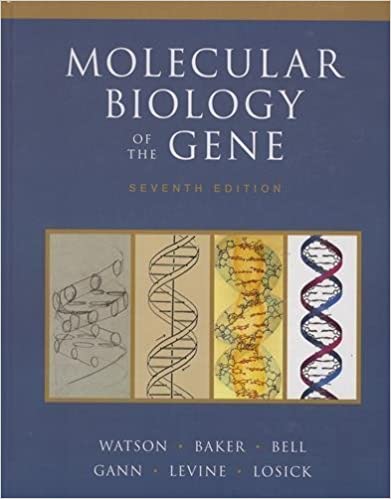
Molecular Biology of the Gene 7th Edition by Richard Losick, James Watson, Michael Levine, Tamara Baker, Alexander Gann
Edition 7ISBN: 9780321762436
Molecular Biology of the Gene 7th Edition by Richard Losick, James Watson, Michael Levine, Tamara Baker, Alexander Gann
Edition 7ISBN: 9780321762436 Exercise 13
You want to make a transgenic line of the nematode C. elegans. The xyz gene is expressed in every cell of the embryo. You fuse the promoter (P xyz , 300 bp) for the xyz gene to the gene encoding green fluorescent protein (GFP) (900 bp). You inject the construct ( pictured below) into the worm. The construct randomly inserts into the genome and is then stably inherited to all progeny.

Although xyz should be expressed in every cell of the embryo, the progeny of this injected adult do not express GFP. You are confident in your injection abilities and believe that the construct did, in fact, integrate into the genome of the injected worm.
A. You amplify and sequence the integrated construct and flanking regions in both directions. On one side, your construct is flanked by a 5000-bp region of random sequence. On the other side, your construct is flanked by 200 "TAAGGC" repeats. Based on these results , propose a hypothesis as to why your construct is not expressed.
You decide to reinject the same construct into another adult worm in an attempt to integrate the construct elsewhere in the genome. You are happy to find that the embryos from this adult worm all show GFP expression in every cell (by fluorescent microscope observations).
B. You want to study the subcellular localization of protein XYZ. Suggest a modification to the construct from part A that would allow you to study Protein XYZ localization in the cell. Explain your reasoning.

Although xyz should be expressed in every cell of the embryo, the progeny of this injected adult do not express GFP. You are confident in your injection abilities and believe that the construct did, in fact, integrate into the genome of the injected worm.
A. You amplify and sequence the integrated construct and flanking regions in both directions. On one side, your construct is flanked by a 5000-bp region of random sequence. On the other side, your construct is flanked by 200 "TAAGGC" repeats. Based on these results , propose a hypothesis as to why your construct is not expressed.
You decide to reinject the same construct into another adult worm in an attempt to integrate the construct elsewhere in the genome. You are happy to find that the embryos from this adult worm all show GFP expression in every cell (by fluorescent microscope observations).
B. You want to study the subcellular localization of protein XYZ. Suggest a modification to the construct from part A that would allow you to study Protein XYZ localization in the cell. Explain your reasoning.
Explanation
A promoter P xyz of 300bp length is inse...
Molecular Biology of the Gene 7th Edition by Richard Losick, James Watson, Michael Levine, Tamara Baker, Alexander Gann
Why don’t you like this exercise?
Other Minimum 8 character and maximum 255 character
Character 255


